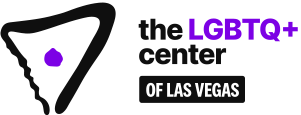Glossary of Terms
Many Americans refrain from talking about sexual orientation and gender identity or expression because it feels taboo, or because they’re afraid of saying the wrong thing. This
glossary was written to help give people the words and meanings to help make conversations easier and more comfortable. LGBTQ people use a variety of terms to
identify themselves, not all of which are included in this glossary. Always listen for and respect a person’s self-identified terminology.
Ally – A term used to describe someone who is actively supportive of LGBTQ people. It encompasses straight and cisgender allies, as well as those within the LGBTQ community
who support each other ( e.g., a lesbian who is an ally to the bisexual community).
Asexual – The lack of a sexual attraction or desire for other people.
Biphobia – The fear and hatred of, or discomfort with, people who love and are sexually attracted to more than one gender.
Bisexual – A person emotionally, romantically or sexually attracted to more than one sex, gender or gender identity though not necessarily simultaneously, in the same way or to the
same degree. Sometimes used interchangeably with pansexual.
Cisgender – A term used to describe a person whose gender identity aligns with those typically associated with the sex assigned to them at birth.
Coming Out – The process in which a person first acknowledges, accepts and appreciates their sexual orientation or gender identity and begins to share that with others.
Gay –I A person who is emotionally, romantically or sexually attracted to members of the same gender. Men, women and non-binary people may use this term to describe themselves.
Gender binary – A system in which gender is constructed into two strict categories of male or female. Gender identity is expected to align with the sex assigned at birth and gender
expressions and roles fit traditional expectations.
Gender dysphoria – Clinically significant distress caused when a person’s assigned birth gender is not the same as the one with which they identify.
Gender-expansive – A person with a wider, more flexible range of gender identity and/or expression than typically associated with the binary gender system. Often used as an
umbrella term when referring to young people still exploring the possibilities of their gender expression and/or gender identity.
Gender expression – External appearance of one’s gender identity, usually expressed through behavior, clothing, body characteristics or voice, and which may or may not
conform to socially defined behaviors and characteristics typically associated with being either masculine or feminine.
Gender-fluid – A person who does not identify with a single fixed gender or has a fluid or unfixed gender identity.
Gender identity – One’s innermost concept of self as male, female, a blend of both or neither – how individuals perceive themselves and what they call themselves. One’s gender
identity can be the same or different from their sex assigned at birth.
Gender non-conforming – A broad term referring to people who do not behave in a way that conforms to the traditional expectations of their gender, or whose gender expression
does not fit neatly into a category. While many also identify as transgender, not all gender non-conforming people do.
Genderqueer – Genderqueer people typically reject notions of static categories of gender and embrace a fluidity of gender identity and often, though not always, sexual orientation.
People who identify as “genderqueer” may see themselves as being both male and female, neither male nor female or as falling completely outside these categories.
Homophobia – The fear and hatred of or discomfort with people who are attracted to members of the same sex.
Intersex – Intersex people are born with a variety of differences in their sex traits and reproductive anatomy. There is a wide variety of differences among intersex variations,
including differences in genitalia, chromosomes, gonads, internal sex organs, hormone production, hormone response, and/ or secondary sex traits.
Lesbian – A woman who is emotionally, romantically or sexually attracted to other women. Women and non-binary people may use this term to describe themselves.
LGBTQ – An acronym for “lesbian, gay, bisexual, transgender and queer.”
Non-binary – An adjective describing a person who does not identify exclusively as a man or a woman. Non-binary people may identify as being both a man and a woman,
somewhere in between, or as falling completely outside these categories. While many also identify as transgender, not all non-binary people do. Non-binary can also be used as an
umbrella term encompassing identities such as agender, bigender, genderqueer or genderfluid.
Outing – Exposing someone’s lesbian, gay, bisexual transgender or gender non-binary identity to others without their permission. Outing someone can have serious
repercussions on employment, economic stability, personal safety or religious or family situations.
Pansexual – Describes someone who has the potential for emotional, romantic or sexual attraction to people of any gender though not necessarily simultaneously, in the same way
or to the same degree. Sometimes used interchangeably with bisexual.
Queer – A term people often use to express a spectrum of identities and orientations that are counter to the mainstream. Queer is often used as a catch-all to include many people,
including those who do not identify as exclusively straight and/or folks who have nonbinary or gender-expansive identities. This term was previously used as a slur, but has
been reclaimed by many parts of the LGBTQ movement.
Questioning – A term used to describe people who are in the process of exploring their sexual orientation or gender identity.
Same-gender loving – A term some prefer to use instead of lesbian, gay or bisexual to express attraction to and love of people of the same gender.
Sex assigned at birth – The sex, male, female or intersex, that a doctor or midwife uses to describe a child at birth based on their external anatomy.
Sexual orientation – An inherent or immutable enduring emotional, romantic or sexual attraction to other people. Note: an individual’s sexual orientation is independent of their
gender identity.
Transgender – An umbrella term for people whose gender identity and/or expression is different from cultural expectations based on the sex they were assigned at birth. Being
transgender does not imply any specific sexual orientation. Therefore, transgender people may identify as straight, gay, lesbian, bisexual, etc.
Transitioning – A series of processes that some transgender people may undergo in order to live more fully as their true gender. This typically includes social transition, such as
changing name and pronouns, medical transition, which may include hormone therapy or gender affirming surgeries, and legal transition, which may include changing legal name
and sex on government identity documents. Transgender people may choose to undergo some, all or none of these processes.
The Human Rights Campaign reports on news, events and resources of the Human Rights Campaign Foundation that are of interest to the general public and further our common mission to support the LGBTQ community.

